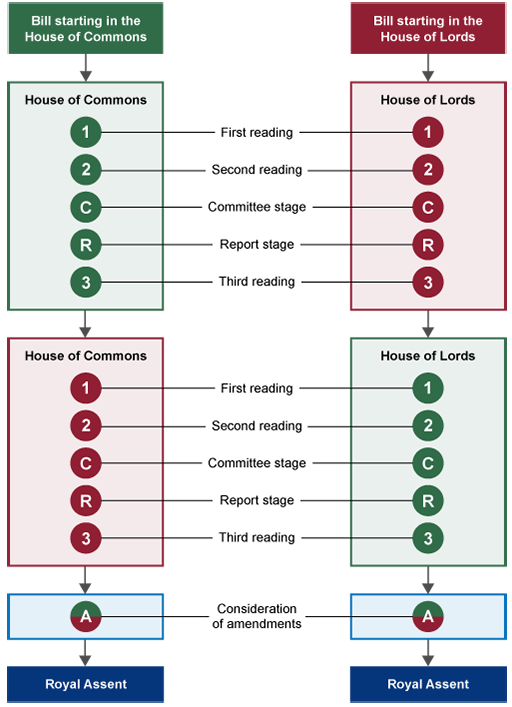2 Law-making and the UK Parliament
The UK Parliament is based at the Palace of Westminster in London. It consists of two debating chambers, known as Houses: the House of Commons, which is elected at general elections, and the House of Lords, which is an unelected chamber.
There is a step-by-step procedure for considering draft laws that all legislation must go through. In summary, draft legislation begins life as a bill that must be debated and approved by both Houses of Parliament. It must then receive Royal Assent.
An Act may come into force – that is, become law – on the day it receives Royal Assent, on a specific future date or in stages. (You will explore how to find out whether an Act is in force later in this session.) The detail of how legislation becomes law is beyond the scope of this course, but Figure 1 gives you an overview. If you wish to learn more, please visit the resources section at the end of the session.
Acts of the UK Parliament are also commonly referred to as statutes, or legislation. This can be confusing, especially to anyone not familiar with the law and the interchangeability of the terms used. Bear this in mind when explaining the law to others – It is important to take a consistent approach.
Parliament comprises of the members of the House of Commons and House of Lords. Members of the House of Commons are elected during UK general elections. Parliament is the legislature.
The UK Government is formed by the political party with a majority in the House of Commons. Government is the executive.


